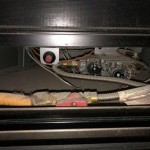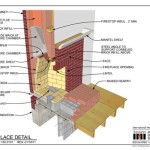How to Operate a Fireplace: A Step-by-Step Guide
Fireplaces, whether traditional or modern, add a warm ambiance and cozy feeling to any home. However, operating a fireplace safely and efficiently requires understanding the process and following specific steps. This comprehensive guide will provide you with clear instructions on how to operate a fireplace, ensuring both safety and enjoyment during your fireplace experience.
1. Preparing the Fireplace
Before igniting a fire, ensuring the fireplace is ready is crucial. This involves several steps:
A. Cleaning the Fireplace: Begin by cleaning the fireplace thoroughly. Remove any ashes from the previous fire, using a fireplace shovel or a vacuum cleaner with a specialized ash attachment. Sweep the hearth and check the chimney for any debris, ensuring proper airflow.
B. Inspecting the Fireplace: Inspect the fireplace for any damage or signs of wear and tear. Check the firebox, damper, and chimney for any cracks or loose parts, ensuring they're in good working order.
C. Placing the Fire Starter: Select a safe fire starter, such as fire starter logs, paper, or kindling. Place the fire starter in the center of the firebox, forming a small pyramid.
D. Arranging Kindling and Logs: Arrange kindling around the fire starter, creating a small teepee. Ensure the kindling is dry, as damp wood won't ignite easily. Once the kindling is in place, add a layer of small logs, gradually building up to larger logs as the fire grows.
2. Starting the Fire
Once the fireplace is prepared, follow these steps to start the fire:
A. Opening the Damper: Open the damper fully to ensure proper airflow and prevent smoke buildup in the room.
B. Lighting the Fire Starter: Carefully light the fire starter with a long-handled match or lighter, ensuring flames reach the kindling.
C. Adding Fuel Gradually: As the kindling catches fire, add small logs, gradually increasing the size of the logs as the fire progresses.
D. Monitoring the Fire: Constantly monitor the fire, ensuring it burns steadily. If the fire starts to die down, add more fuel or adjust the damper to increase airflow.
3. Maintaining the Fire
Maintaining a steady and safe fire requires ongoing attention:
A. Adding Fuel Regularly: Add logs to the fire periodically to maintain a good flame. Avoid overloading the firebox, allowing sufficient space for air circulation.
B. Regulating the Damper: Use the damper to control the airflow and temperature of the fire. A partially closed damper will reduce the fire's intensity, while a fully open damper will allow for a hotter fire.
C. Removing Ashes: Remove ashes from the firebox regularly, using a fireplace shovel or a specialized ash vacuum cleaner. A buildup of ashes can restrict airflow and hinder the fire's efficiency.
D. Monitoring Smoke: Watch for excessive smoke or signs of chimney problems, such as creosote buildup. If you observe any issues, consult a professional chimney sweep for inspection and cleaning.
By following these steps, you can safely operate your fireplace, creating a warm and inviting atmosphere for your home. Remember to prioritize safety by ensuring proper ventilation, inspecting the fireplace regularly, and using appropriate fire-starting materials and techniques. Enjoy the warmth and ambiance of your fireplace responsibly.

How To Use A Fireplace Bob Vila

3 Ways To Use A Fireplace Safely Wikihow Life

Five Easy Steps On How To Properly Use A Fireplace

How To Operate A Gas Fireplace

How To Use A Fireplace Damper The Right Way

Safety Tips For Using Your Fireplace This Winter Boston Ma

Fireplace Information Eagle Propane S

How To Start A Fire In Fireplace

How To Safely Operate Your Gas Fireplace Chimney Champions

Basic Home Improvements How To Work A Fireplace Damper
Related Posts








